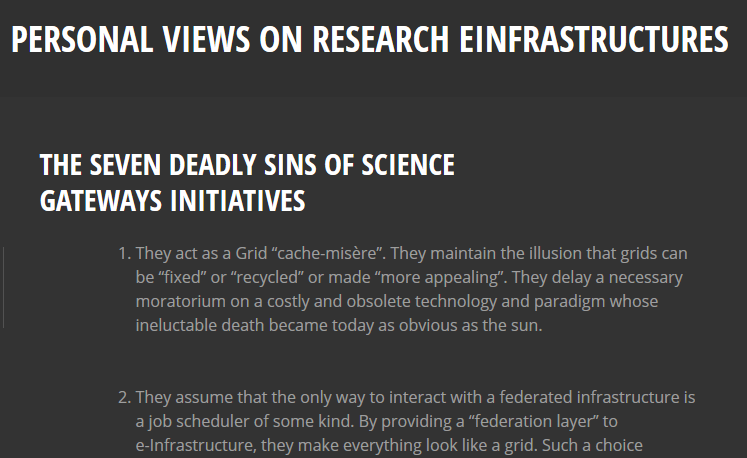
One year ago, Augusto Burgueño Arjona was appointed Head of Unit eInfrastructures, DG CONNECT at the European Commission. This unit is responsible for funding ICT-based infrastructures and services that cut across a broad range of user disciplines, including EUDAT. In December 2014, Augusto launched a personal blog where he shares his personal views on research e-Infrastructures to encourage discussion, stimulate debate and receive feedback and contributions from his readers.
Shortly after its presentation to the world, and especially to Europe, Augusto asks Why is the Juncker 315 billion euro investment plan important for research e-infrastructures? His answers give a brief overview of the plan, an outline of the role of European Member States and Regions and finally an extract of the illustrative list of projects relevant to e-infrastructures.
In his most recent post, with audio visual support, on How EU-funded research e-Infrastructures could address sustainability, innovation and data-related challenges Augusto makes concrete propositions and suggestions on each of these 3 elements. These elements would appear to stem from previous posts, including his very first outlining a set of reflection after #RDAITEU2014. Is his ambition to identify alternative funding models to reinforce the fairness, efficiency and effectiveness of the e-Infrastructure funding mechanism by putting the researchers in the driving seat, increasing the predictability of funding of running costs, and opening up the development of new services to new actors, realistic? Let him know.
With the start of every new calendar year, it is an appropriate time to take stock of yearly achievements and set targets for the 12 months ahead. Augusto does just that in his Our Biggest Challenges in 2015 post. These are summed up into 4 specific challenges as identified by Horizon 2020 Research Infrastructure Advisory Group:
- Expanding the role and impact of Research Infrastructures in the Innovation chain
- Ensuring sustainable funding and optimal life-cycle of Research Infrastructures
- Maximizing data exploitation
- Assessing Evaluation procedures of Research Infrastructures
So as you can imagine one of his biggest challenges in 2015 will be to draft a Work Programme (2016-1017) that can properly address these points. He invites personal suggestions & solutions to help him & his colleagues in this overwhelming endeavour.
Augusto invites all to contribute to his blog and Fabio Gallo, a guest contributor, outlines the serious and imminent energy challenges for Data Centers & HPC and how IT is rapidly becoming a bigger contributor to the carbon footprint. Some of Augusto’s own posts look at HPC: European Exascale vision and strategy on Big Data and Extreme Computing and The European HPC Strategy – Regional Vision and Strategy. Also an area of his unit’s focus for 2015, the KPIs tied to the implementation of The European HPC Strategy will be under scrutiny by the European Parliament & Council at the end of this year, but he is confident they will be satisfied by the EU HPC community achievements.
Watch (t)his space to find out …. http://ABurguenoEU.wordpress.com
Author: Hilary Hanahoe, 20 Feb 2015
